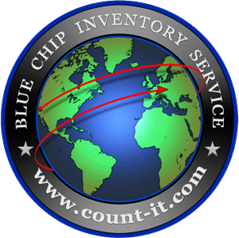
In order for a manufacturing company to be successful, the production process must be optimized as much as possible. That includes managing employees, materials, inventory levels and costs in a way that maximizes efficiency and stays comfortably within the proposed budget. To follow are several tips that will help make the manufacturing process easier to manage.
Develop a Strategy
To get the most out of your production and manufacturing activities, it’s crucial that you have a clearly defined and well-documented strategy in place. Otherwise, you could be wasting valuable time, money and resources in areas that aren’t going to pay any dividends. By developing and implementing a production strategy, labor costs will be optimized and inventory levels will be much more accurately maintained. This will help you avoid overstock or shortage situations, ultimately improving customer satisfaction levels.
Manage Risk
The concept of risk management isn’t just for insurance or financial service companies. In fact, successful manufacturing companies also participate in this important task. For example, using forecasting can help better prepare for fluctuations due to seasonal changes and other contributing factors. The more you plan ahead, the lower the risk of running out of inventory during peak times or ending up with too much of a particular item that might end up causing costly shrinkage. Risk management in the manufacturing industry involves data analysis and strategic planning.
Human Resource Management
While it’s certainly true that the main focus of manufacturing managers typically involves important things like production timelines, product quality, operational efficiency and worker safety, human resources should also be a priority. Managing and maintaining the right amount of workers and ensuring that those employees possess the skills necessary to do their jobs well can truly mean the difference between a well-run operation and one that is fraught with delays, bottlenecks and chaos. Additionally, preparing for staffing needs based on customer demand is also important.
Develop/Maintain SOPs
Part of your production strategy should include a list of standard operating procedures, or SOPs for short. These are essentially the best practices that have been developed, tested and implemented to help a manufacturing company optimize resources, maximize productivity and efficiency and operate like a well-oiled machine. SOPs help ensure that jobs are performed correctly and consistently. In turn, this can dramatically reduce employee errors and create a much more streamlined work environment, which ultimately leads to increased customer satisfaction.
In addition to these key areas, management should focus their efforts on removing production bottlenecks which impede efficient workflow and create waste. There are a number of ways to achieve this goal, including leveraging technology, improving labor practices, and identifying and implementing procedural changes, just to name a few. Brainstorming sessions involving key personnel can help to develop the best course of action that will suit the business needs and stay comfortably within budget.


This calculator can help you determine the selling price for your products to achieve a desired profit margin. Try It Free >
Our Audit/Verification Service is available globally - from Thousand Oaks, CA to Timbuktu. Learn More >
Don't just take our word for it. Find out what our clients are saying about our services.
See actual testimonials >
From Retail and Gross Margin Inventory reports, to SKU and Price Verification reports, Blue Chip Inventory provides complete inventory service. See samples >






